Largely unheard for more than 70 years, the astonishing actuality recordings preserved on RAF Bomber Command at War were made by plucky BBC engineers, who bravely joined the crews of Lancaster heavy bombers for night raids on German targets during the Second World War. The recordings were made on portable 'midget' disc cutting machines plugged directly into the aircraft intercom system, and capture the unfolding drama of anti-aircraft fire, night fighter attack, evasive action, 'bombs away' and the ever-present danger of mid-air collision.
This 76 minute audio CD compiles rare archive recordings from the Second World War, including broadcast and actuality recordings made during Bomber Command raids on Essen, Stettin, Kleve and Berlin in 1943, together with crew debriefs and war correspondent reports. The correspondents featured include Wynford Vaughan Thomas, Edward R. Murrow and Richard Dimbleby. The CD also features recordings made by aircrew after returning safely to base, including an air gunner's account of the devastating raid on Dresden in February 1945, and a remarkable report on the daring raid on the Dortmund-Ems Canal in August 1940, for which the speaker (Flt Lt Roderick Learoyd) was awarded the Victoria Cross, Britain's highest gallantry award. The booklet features detailed recording and historical notes by James Hayward. All audio content has been carefully digitally restored, making this CD a must for all historians and researchers, as well as collectors of archive broadcast recordings.
CD tracklist: Target for Tonight March (1.11); address by Air Marshall Sir Arthur Harris 1943 (1.36); Dortmund-Ems Canal raid 8/1940 (3.59); Essen raid 4/1943 (3.36); Stettin raid 4/1943 (3.41); at a Lancaster bomber station 1944 (5.59); Berlin raid 9/1943 (30.45); Berlin raid 12/1943 (17.25); Kleve raid 2/1945 (5.30); Dresden raid 2/1945 (2.41).
Reviews: "This is a captivating insight into Bomber Command operations - you can't get a more direct link than by hearing it from those who were there, as it happened. Perhaps the most absorbing tracks are the recordings made during operations over Essen, Stettin, Berlin and Cleeve via the intercom system. On the Essen raid you hear the crew going about their duties in a very calm, matter-of-fact way, despite the fact that one is able to read his watch by the searchlights, and that flak is blasting all around them - and hits the aircraft on one occasion"(Flypast, 10/2006); "Chilling and evocative, valuable history and a genuine human testament" (Pilot Magazine, 03/2007); "Raiding with the Lancasters! Excellent - highly recommended" (Best of British, 9/2006); 'I cannot praise this CD highly enough. It exhausts superlatives. To listen to actual operations as they happened is both a privilege and an ordeal: yes, of course you know that these particular crews returned (if they had not, the recordings would not exist), but that will not stop you gripping the side of your chair as you hear them brave the lethal skies of Germany, weaving and twisting to avoid the deadly glare of the searchlights, the unblinking eyes of the gunners on the lookout for night-fighters, the flak exploding around them in an inferno of hot steel and cold hate' (www.waterstones.com, 03/2009)
Liner notes:
TRACK 1 : TARGET FOR TONIGHT (MARCH) 1.11
TRACK 2 : AIR CHIEF MARSHAL SIR ARTHUR HARRIS 1.36
Together with Track 5, this recording was released 'by permission of the Air Council' as a double-sided 78 rpm disc through The Gramophone Company (OEA 10026/27) in 1943 to raise charitable funds. The opening Target for Tonight March was composed by Leighton Lucas. A veteran of the Royal Flying Corps, Bomber Harris (1892-1984) led Bomber Command from February 1942 until the end of the war. Famously, Harris preferred area bombing over precision targeting, a controversial choice defended in his memoir Bomber Offensive published in 1947.
TRACK 3 : DORTMUND-EMS CANAL RAID, 19 AUGUST 1940 3.59
On the night of 12/13 August 1940 eleven Hampdens of 49 and 83 Squadrons undertook a low-level attack on the Dortmund-Ems canal at a point near Munster, where the canal crosses the River Ems via twin aqueducts. Due to previous attacks by 5 Group the ground defences had been increased, so that this raid was met by an intense flak barrage. Although two Hampdens were shot down, eight managed to press home the attack and caused considerable damage. Flight Lieutenant Roderick 'Babe' Learoyd of 49 Squadron won Bomber Command's first Victoria Cross of the war after making a determined attack at 150 feet in the full glare of searchlights. Learoyd's aircraft was badly hit, sustaining ruptured hydraulics and its flaps and undercarriage put out of action. After nursing his crippled back to RAF Scampton in Lincolnshire Learoyd was obliged to circle for three hours until dawn broke and he was able to risk a belly landing. Learoyd made this broadcast anonymously on 19 August 1940. Bomber Command personnel would be awarded a total of 19 VCs during the Second World War. During the war 49 Squadron flew more Hampden sorties than any other squadron.
TRACK 4 : STETTIN RAID, 20/21 APRIL 1943 3.41
Actuality recording made inside the bomber with the aid of recording apparatus connected to the intercom system. Made during the night 20/21 April 1943, this recording covers: pilot sights target; bomb aimer's instructions to pilot; flares dropped; pilot told to keep weaving; bomb doors open; bombs gone; bomb doors closed; evasive action taken. It then continues with: navigator gives new course to pilot; flak coming up; pilot tells rear gunner to look out for fighters.
The Stettin raid on 20/21 April 1943 involved 339 aircraft (194 Lancasters, 134 Halifaxes, 11 Stirlings), of which 21 were lost. The target was more than 600 miles from England; this raid proved to be the most successful made beyond the range of Oboe during the Battle of the Ruhr. Visibility was good and the Pathfinder marking accurate, resulting in the destruction of some 100 acres of the centre of the town and the death of 586 people. On the same night 86 Stirlings attacked the Heinkel factory near Rostock.
TRACK 5 : ESSEN RAID, 25 APRIL 1943 3.36
BBC actuality recording released as RAF Over Essen on a double-sided 78 rpm disc in 1943 (details as track 1). This recording captures a bombing run over the German industrial city by a Lancaster of 83 (Pathfinder) Squadron, a marker unit then based at RAF Wyton in Cambridgeshire. The given recording date is 25 April 1943, although Bomber Command's large raid on Essen took place on the night of 30 April/1 May, and involved 305 aircraft. Content: bombs gone; bomb doors closed; member of crew looks at his watch and reads the time by light of searchlights; navigator gives course and reports flak and searchlights; number of searchlights; flak comes close to aircraft; more flak close by; searchlights left behind; minor damage to front of plane; 4000 lb bomb seen to explode; attack judged "not a bad show."
The Battle of the Ruhr lasted for four months, from March to July 1943, at a time when Berlin represented a problematic target. The Ruhr area offered a mass of industrial cities and targets, and was within range of the Oboe blind-marking device on which Pathfinder aircraft largely relied. At the peak of the battle in late May, Bomber Command were able to field more than 800 aircraft, four-fifths of them four-engined heavies.
TRACK 6 : AT A LANCASTER BOMBER STATION, MARCH 1944 5.59
Canadian war correspondent Stewart MacPherson interviews the station commander, as well as Lancaster aircrew on their return from raiding Berlin. On the night of 24/25 March 1944 a total of 811 aircraft were sent to Berlin, including 577 Lancasters, 216 Halifaxes and 18 Mosquitoes. 72 aircraft were lost, mostly to flak, but with 14 claimed by night fighters in the target area. A strong southerly wind plagued the mission, scattering the bomber stream and creating difficulties in marking the target. Most of the damage in Berlin was to the south-west, where much housing was destroyed and 20,000 civilians made homeless. Some 150 people were killed on the ground. Several industrial and military targets were also hit, including the depot of a Waffen SS division in Lichterfelde. This attack proved to be the last major RAF raid on Berlin.
TRACKS 7 to 25 : BERLIN RAID, 3/4 SEPTEMBER 1943 30.45
On the night of 3/4 September 1943 BBC correspondent Wynford Vaughn Thomas and recording engineer Reginald Pidsley flew to Berlin aboard Lancaster EM-F for Freddie of 207 Squadron, then based at RAF Langar in Nottinghamshire. The photograph reproduced on page seven of the CD booklet shows Pidsley and Vaughn Thomas in front of this aircraft prior to taking off. On this mission the Lancaster was piloted by Flight Lieutenant Ken Letford. The recordings made by Pidsley were edited and broadcast within 12 hours of landing at Langar. The running order of the tracks on the original transcription disc (and thus the sequencing on this CD) is as follows: (1) take-off; (2-4) crossing coast (intercom); (5) oxygen test (intercom); (6) over sea, description of crew; (7) crossing enemy coast; (8) searchlights seen (intercom); (9) approaching Berlin; (10) bomb run, fighter attack (intercom); (11) Junkers 88 shot down; (12) leaving target (intercom); (13) one hour to Berlin; (14) last glimpse of Berlin; (15-16) homeward flight; (17) first sight of English coast; (18) crossing coast (intercom); (19) homeward journey, petrol checked (intercom).
The attack on Berlin on the night of 3/4 September 1943 involved 316 Lancasters and 4 Mosquitoes, which dropped 'spoof' flares at a distance from the heavies' route to mislead German night fighters. Although both marking and bombing mostly fell short the industrial area of Siemensstadt was hit, as well as residential areas of Charlottenburg and Moabit. 422 people were listed as killed on the ground. 22 Lancasters were lost. During the war 207 Squadron suffered the fourth highest overall percentage losses in Bomber Command, and the highest percentage losses in 5 Group.
All the airborne actuality included on this CD were made using direct cut acetates, made on portable disc cutters which provided a sound recording that could be replayed instantly. At altitude in a Lancaster bomber, Reg Pidsley first had to place the uncut discs inside his flying jacket to warm them up, since otherwise the ultra low temperatures made the disc lacquer too brittle to cut. On 3 September 1983 Pidsley was reunited with surviving members of the crew and presented the original recorded discs to the Squadron. Wynford Vaughn Thomas also made a television documentary based on the recording, during which he explained that his voice sounded strange because a problem had developed with his oxygen supply. The photograph of Reg Pidsley and Wynford Vaughn Thomas with EM-F Freddie is drawn from the Pidsley archive, and is reproduced by kind permission of Rob Clayton.
TRACK 26 : BERLIN RAID, 2/3 DECEMBER 1943 17.25
Celebrated journalist and broadcaster Edward R. Murrow (1908-1965) was head of the Columbia Broadcasting System foreign staff, and the principal American interpreter of Britain to his own country in wartime, with an audience numbering millions. Murrow made several flights over enemy territory in RAF and USAF aircraft, and wrote in 1946: "There was a night over Berlin when we were coned with the lights. The Lancaster was corkscrewing. The pilot said, 'Window like mad'. He meant to throw out those metallic strips used to confuse the enemy radar, and the bomb aimer said to me over the intercom, 'Mr Murrow, could you please pass me another package of windows?' That's what he said - 'please' - and it seemed so natural that I forgot about it till we returned to base. Then there was a Halifax pilot on the Rhine drop who asked me just before we crossed the river whether it would be all right if I stepped on my recording gear in case we had to bail out. Even after nine years I can't always be sure when an Englishman is being serious."
458 aircraft (including D-Dog, with Murrow on board) attacked Berlin on the night of 2/3 December 1943, the force including 425 Lancasters, 18 Mosquitoes and 15 Halifaxes. The all-out assault on the German capital began on the night of 18/19 November, but on the 2/3 December raid winds scattered the bomber streams, which also encountered numerous night fighters. 40 aircraft were lost, including a Lancaster of 460 (Australian) Squadron carrying two newspaper reporters, Captain Grieg of the Daily Mail and Norman Stockton of the Sydney Sun. Indeed flying with Bomber Command was statistically the most dangerous form of combat reporting on offer to correspondents. The raid caused some damage to industrial areas to the east and west of the city. On the ground 36 people were listed as killed and 105 missing. Murrow's report was aired on 3.12.1943. Lowell Bennett, who is referred to in this broadcast, did in fact return safely from the Berlin raid. Goodnight, and good luck!
TRACK 27 : RAID ON KLEVE, 7/8 FEBRUARY 1945 5.30
An extract taken from a recording made by Richard Dimbleby during a bombing raid on Kleve in February 1945, aboard a Lancaster of 153 Squadron. The raid involved 295 Lancasters and 10 Mosquitoes, made in preparation for the attack by the British XXX Corps across the German frontier into the Reichswald, although the damage caused by the 1,384 tons of high explosive only served to hamper the advance on the ground. By the end of the war Kleve claimed to be the most badly damaged German town of its size. At the close of the recording anti-aircraft fire causes the cutting head to jump on the recording disc (this is not a technical fault on the CD). 153 Squadron formed as a Lancaster unit in 1 Group in October 1944, and operated from Scampton.
Richard Dimbleby was the first BBC war correspondent to accompany an operational RAF bomber raid, flying to Berlin on 6 January 1943 in a Lancaster piloted by Guy Gibson. The broadcast was a success, and by the end of the war Dimbleby had completed twenty such missions, despite the fact that he was scared of flying and frequently sick. In 1944 he was appointed head of the BBC War Reporting Unit. Dimbleby was a passionate advocate of the bomber offensive, in spite of the fact that the BBC laid down firm (if optimistic) guidelines about how the bombing of Germany should be reported: "It is a scientific operation, not to be stunted, to be gloated over, or to be dealt with in any other way than the most factual reporting arising from the communiques and from material obtained from Air Headquarters of Bomber Stations."
TRACK 28 : RAID ON DRESDEN, 13/14 FEBRUARY 1945 2.41
Flight Sergeant Frank Bramley, RCAF, mid-upper gunner in a Lancaster bomber, describes a simultaneous view of the eastern and western fronts from great altitude while returning from the raid on Dresden on 13/14 February 1945. First broadcast on 16 February 1945. The Dresden raid remains a matter of controversy. 796 Lancasters and 9 Mosquitoes were dispatched on two separate attacks, dropping 1478 tons of high explosive and 1182 tons of incendiaries. The result was an horrific firestorm which burned out thirteen square miles of the city's historic centre and killed between 25,000 and 50,000 people. Little of this would have been apparent to Flight Sergeant Bramley flying at tens of thousands of feet. Six Lancasters were lost, with another 3 crash landing on returning to base. The RAF attack on Dresden was followed up by an American daylight raid the next day.
Approximately 125,000 aircrew served in Bomber Command between 1939 and 1945, of whom more some 55,500 were killed and 8,404 wounded. Bomber Command carried out a total of 387,416 sorties on which 8953 aircraft were lost. The approximate tonnage of bombs dropped was 955,044 tons. This CD is dedicated to the memory of the men of Bomber Command killed during the Second World War. A portion of the proceeds from the sale of this CD have been donated to The Royal Air Forces Association (www.rafa.org.uk)

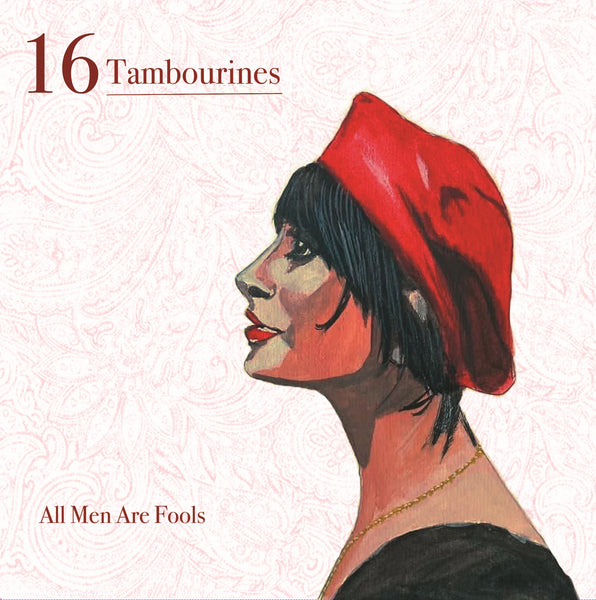
$12.00
Release date: 5/10/2024Original release date: 12/9/2022First studio album since 1989. Limited edition of 200 black vinyl LP with lyric sheet and art print signed by...

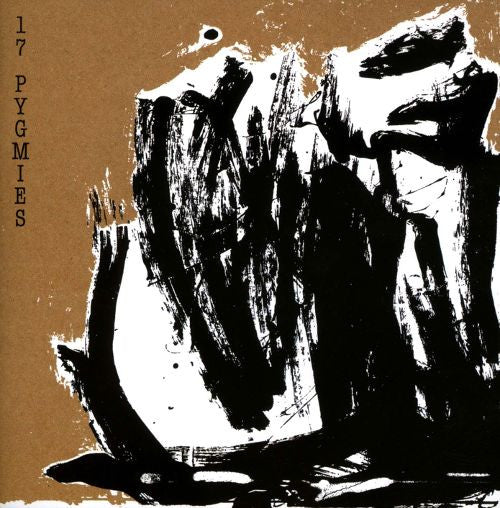
$14.75
LTM presents a deluxe reissue of the first two albums by Californian experimentalists 17 Pygmies on remastered double CD and download.Formed in Los Angeles in...

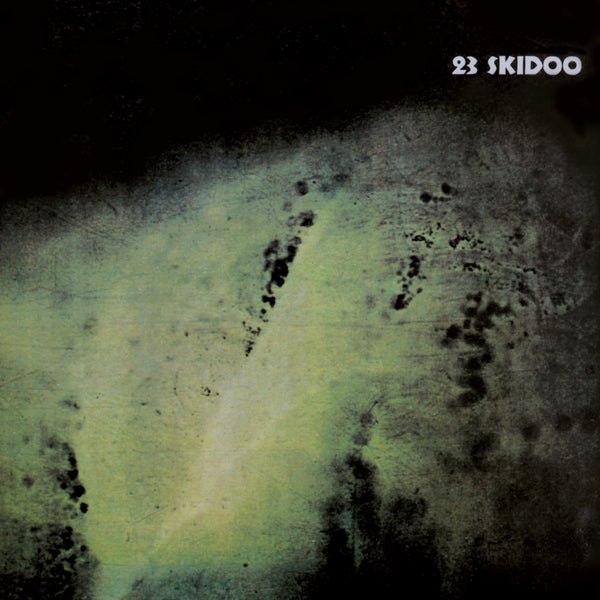
$13.99
Release date: 10/29/2021. Les Disques du Crepuscule present a new 76-minute CD edition of The Culling Is Coming by 23 Skidoo, originally released on vinyl by Crepuscule and sister...

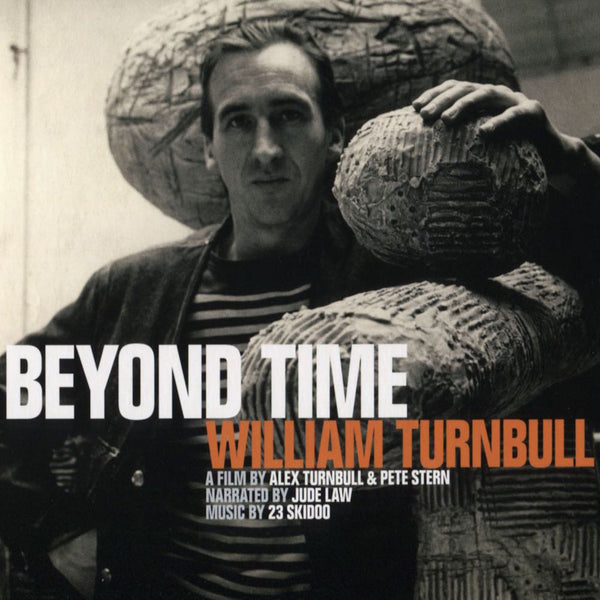
$7.00
1. Dawning (Version), 2. AYU (ambient), 3. Calypso, 4. Interzonal, 5. Kendang, 6. Contemplation, 7. Helicopterz, 8. Urban GamelanDownload available with purchase of LP+DVD.Beyond Time...

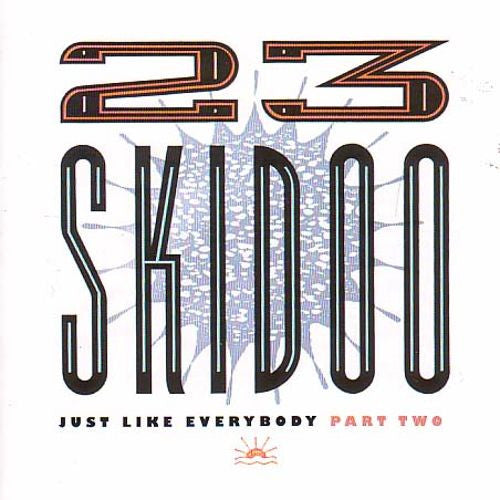
$14.75
LTM is proud to announce a series of expanded reissues on CD and download by seminal post-punk group 23 Skidoo. Initially active between 1979 and...


$13.99
An expanded remaster of the seminal mini-album Seven Songs by 23 Skidoo, whose unique industrial ethno-funk hybrid topped the British indie charts in 1982. As...


$13.99
First released by Les Disques du Crépuscule and Operation Twilight in February 1983, The Culling Is Coming flagged two radical new directions for Skidoo following...


$13.99
An expanded remaster of the third album by 23 Skidoo, originally issued in 1984 and now with four bonus tracks including the 12" versions of...